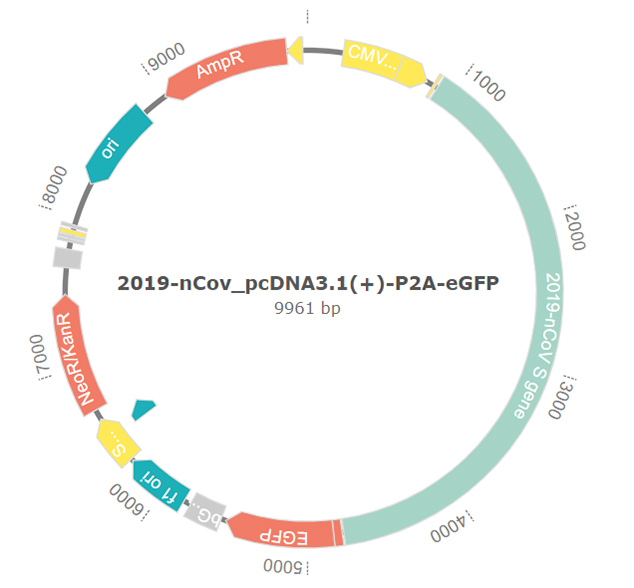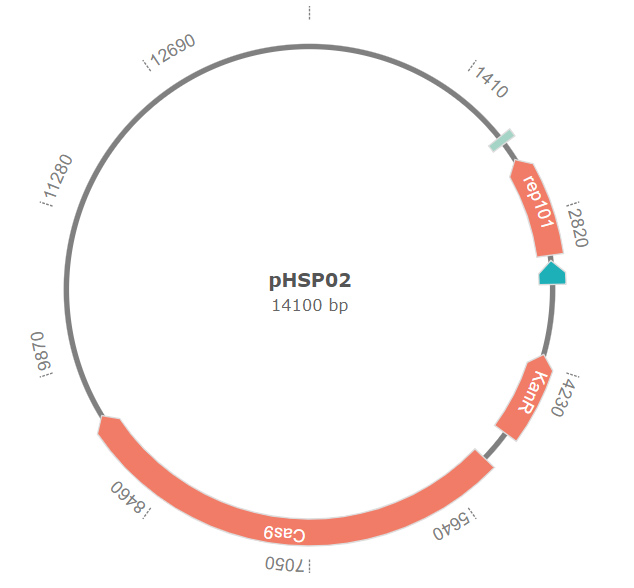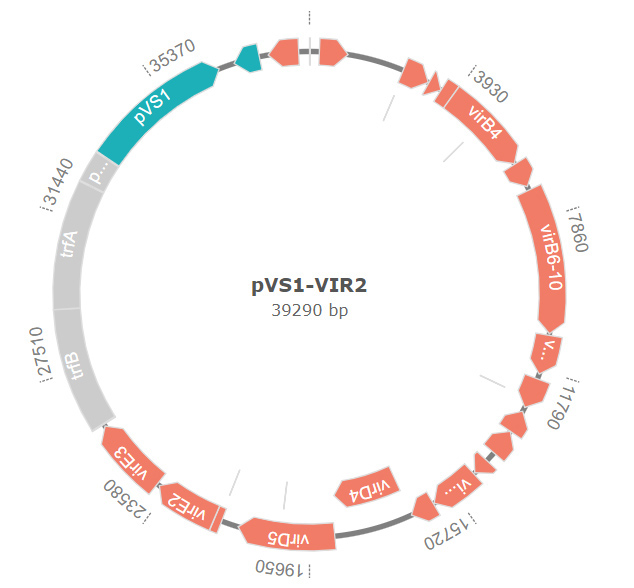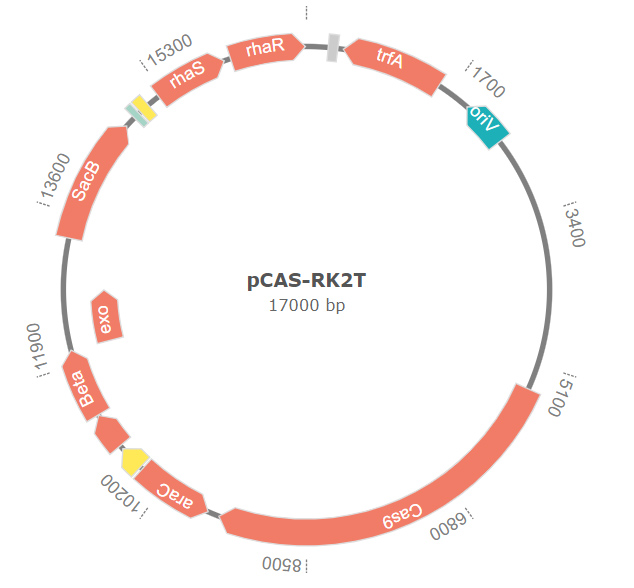From December 2019 to February 2020, we successively launched four rounds' voting for most popular CRISPR plasmids on MolecularCloud. Finally more than 350 customers proactively participated in this campaign. As promised, we gave out the top 3 popular plasmids to those who voted for them for free after every round's voting. So far, more than 40 plasmids have been sent out to customers for free.
How come these plasmids are so popular? What are they designed for?
Here we invited some researchers who have created the most popular plasmids to share their stories.


pRed_Cas9_recA_∆poxb300
"We're honored that so many people like this plasmid. The plasmid was developed for a fast and easy method for E. coli genome editing with only one plasmid construction and one transformation. Using homologous arms of around 40bp, we were able to rapidly construct it with a modular approach and Golden Gate assembly strategy. Later the plasmid was used as template for the PCR amplification of target modules. You can find the protocols in our paper. Tell us if you'd like to try this plasmid and method by leaving a message under the plasmid's page."
Dr. Changhao Bi

2019-nCov_pcDNA3.1(+)-P2A-eGFP
"Since the outbreak of 2019 novel coronavirus, our team promptly dedicated into the research of this coronavirus. When we constructed the plasmids, we thought that the research community should work together to defeat it and time is urgent. So we shared them on MolecularCloud and hope they could save the other researcher's time. This plasmid was used for 2019-nCoV (also known as SARS-CoV-2) surface glycoprotein expression with codon optimized for mouse expression system. The surface glycoprotein is integrated with eGFP protein through P2A, which can be used for flow cytometry antibody screening or immunological research."
Dr. H Yu

pCMV-dCpf1-BE0
"The targeting range of CRISPR–Cas9 base editors (BEs) is limited by their G/C-rich PAM sequences. To overcome this limitation, we developed a CRISPR–Cpf1-based BE. The base editor recognizes a T-rich PAM sequence and catalyzes C-to-T conversion in human cells. This plasmid pCMV-dCpf1-BE0 was designed to test the Cpf1-based BE system's editing potential in an Escherichia coli plasmid-derived episomal shuttle-vector reporter system, and proved that dLbCpf1-BE0 induced a high level of C-to-T base editing in the target regions. We'd like to share it with anyone who's interested. Just leave us a message! "
Dr. Jia Chen

pHSP02
"Lactobacilli has very promising industrial and medical significance, however, the conventional CRISPR-Cas9 system was unable to enhance effective HDR in some Lactobacillus species. So we developed a CRISPR-Cas9-based toolbox which combines host‐associated RecE/T helper plasmids and CRISPR editing plasmids for Lactobacillus genome editing. The editing plasmid pHSP02, in which sgRNA was driven by synthetic promoter P11, performed high editing efficiency and can be used as the editing plasmid for L. plantarum WCFS1. Feel free to share your questions or ideas with us, just write them down in the comment section!"
Dr. Sheng Yang

pVS1-VIR2
"The lack of efficient delivery methods is a major barrier to CRISPR/Cas-mediated genome editing in many plant species. We developed a novel ternary vector system to integrate the MR and CRISPR/Cas modules. In this system, the new binary vectors were based on a pGreen-like backbone, and the new virulence helper plasmid pVS1-VIR2 also served as a replication helper plasmid for these new binary vectors. Our ternary vector system-based tools provide a user-friendly solution to the low efficiency of CRISPR/Cas delivery in maize and represent a basic platform for developing efficient delivery tools to use in other plant species recalcitrant to transformation. Feel free to leave us a message, don't miss the chance to get it for free!"
Dr. Qijun Chen

pCAS-RK2T
"The soil bacterium Pseudomonas putida KT2440 is an ideal chassis for synthetic biology, biodegradation, and other biotechnology applications. The known genome editing approaches of Pseudomonas sp. are suboptimal. We established a fast and convenient CRISPR-Cas9 method in P. putida KT2440 which consists of two plasmids: pCAS-RK2K and pSEVA-gRNAT. pCAS-RK2T is the tetracycline version of pCAS-RK2K. It is an E. coli - Pseudomonas putida KT2440 shuttle plasmid containing a Cas9, a λ-Red system and a pSEVA-gRNAT targeting sgRNA cassette under the control of rhamnose-inducible promoter."
We would like to share it with anyone who is interested. Just leave us a message!
Dr. Sheng Yang
Limited-time Campaign: Write comments for your favorite plasmids and get them for FREE!
Do you like the stories? Are you interested in any of the plasmids? Would you like to share your own stories of designing plasmids? Write comments on the details page of the plasmid you are interested in, you'll have chances to get them for free!
How the Campaign Works
List of the Plasmids Involved in the Campaign
Terms and conditions
- This campaign is effective between March 05,2020 to April 05,2020.
- Each account can write comments for more than one plasmid listed in the above table. Since we'll pick out the top 3 plasmids as free gifts, everyone has chances to get 3 free plasmids!
- Only the comments with the special tag # I want this plasmid # will count.
- The plasmids are shared with academic and nonprofit organizations for free for research use. Customers from industrial institute or attempt for commercial application could also participate in this activity, but the depositors may charge some transmittal fee for the plasmids.
- A representative of MolecularCloud will contact with you once the campaign is finished to arrange signing of MTA files, ordering and shipment of the plasmids.
- MolecularCloud will not charge the winning customers any preparation fee for the plasmids, however the winner needs to take charge of the international shipping cost. The standard delivery of the plasmid is lyophilized DNA.
- Contact us at plasmid@genscript.com if you have any questions about this campaign.